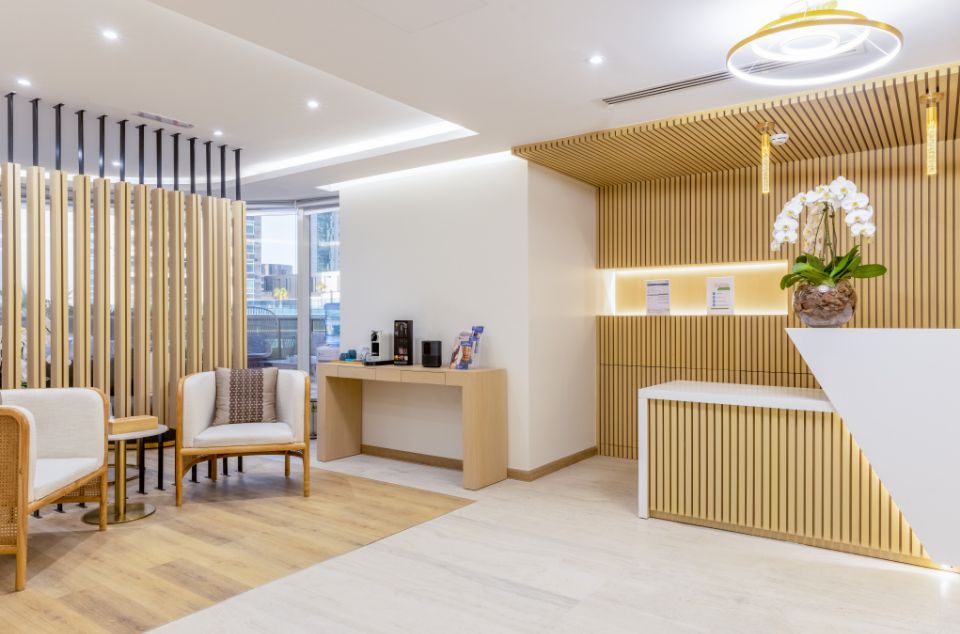Face lift
INTRODUCTION TO
Face lift
A facelift, or Rhytidectomy, is a surgical procedure used to reduce sagging skin on the face and sooth skin folds on the cheeks and jawline, thus creating a
much younger appearance. It is an operation equally popular in men and women, usually of a more advanced age.
A number of causes, such as skin thinning, facial fat loss, gravity, sun damage, smoking, as well as heredity and stress, can cause the face to lose
its young contours. This can negatively impact self-image, and can lead to severe anxiety and even depression. By undergoing this operation, you will regain a youthful appearance, as it greatly improves your facial characteristics. It can also be combined with a brow lift, in order to rejuvenate the appearance of the patient’s eyes. A neck lift is frequently performed in conjunction with a face-lift, in order to thin out the neck’s fat and loose skin.
Alternatively, people seeking facial rejuvenation but who do not wish to undergo surgery, can opt for a treatment with dermal fillers. In order to restore lost volume in the cheekbones, temples, lips, under-eye area, and nasolabial folds, fillers are precisely injected under the skin. There are different solutions, and our medical professionals will choose the best one for you based on your cosmetic needs. Facelifts, however, are able to erase vertical bands and tighten sagging neck skin, something fillers and Botox injections are unable to do.


Consultation
During consultation, you will discuss with one of our experienced doctors your surgical goals, medical history, drug allergies and previous treatments, but also the likely outcomes and risks of the operation. A blood test and some other examinations will be required, and you will be advised to stop current medications, vitamins, herbal supplements, alcohol and tobacco.
The doctor will then examine your face and finally be able to recommend a full course of treatment, based on your medical profile and cosmetic goals.
You will be considered an ideal candidate for this procedure if:
- have creases below the lower eyelids
- have displaced facial that created jowls
- are a nonsmoker
- have loose skin and fat deposits under the chin and jaw
- wish for a more youthful appearance
- wish for better facial skin quality
- have realistic expectations about the results that can be achieved by surgery
Procedure
A facelift can take between two to four hours, and is performed under general anesthesia:
- TRADITIONNAL FACELIFT: An incision that starts in the hairline near the temples, travels around the ear, and terminates in the lower scalp is made. In addition to repositioning underlying tissue and sculpting or redistributing fat from the face, jowls, and neck, it is also frequently necessary to lift the muscles and deeper layers of the skin on the face. Excess skin is removed and redraped over the raised features. To further rejuvenate an aged neck, it could be required to make a second incision under the chin. The incisions are closed using dissolvable sutures.
- LIMITED FACELIFT: The incision made is shorter and begins just above the ear, in the hairline. It wraps around the front of the ear but does not extend all the way into the lower scalp. Due to the fact that the results are not as rejuvenating as a full facelift, these are often only used on patients who have less skin relaxation.
- DERMAL FILLERS: A faster, non-invasive treatment, using Hyaluronic acid, collagen, fat or Platelet-Rich-Plasma (PRP). The patient is given repeated injections of dermal fillers, which are substances that restore facial volume for a more youthful look, soften wrinkles and facial creases and decrease shadows under the eyes.The areas around the nose, around the eyes, and the creases beneath the mouth will be targeted for each injection. This procedure is performed under local
anesthesia and will take between 30 minutes to an hour.Recovery time is minimal, and you can resume usual activities within two days. You will experience some bruising, numbness and swelling, which will
quickly subside. Most patients do not need medication, but your doctor might prescribe mild pain-relievers.
Your face lift will produce long-lasting results, and you will see change once the bandages have been removed, but it could take several months for the
swelling to completely go down and up to two months for the incision lines to heal.

Recovery
Following surgery, the incisions made will be covered with bandages that will apply light pressure to minimize swelling and bruising, but also protect the area. A tube will be placed under the skin in order to drain excess blood or fluid. Some medication will be prescribed to you, and you will need to rest at home for at least 3 to 4 days. You can use cold packs to minimize swelling, but it is important that there is no other unneeded contact with the area. When lying down, you will be instructed to keep your head raised. Tobacco, alcohol, blood-thinning medication, exercise and heavy lifting should all be avoided for 3 to 4 weeks following surgery.
Based on the method, your condition and medical history, the doctor will deem for how long the bandages will need to be kept, and will provide to you a full
recovery plan with more precise timelines.
Risks
Although it is rare, some risks and complications might arise following a Rhytidectomy:
- bleeding
- numbness
- fluid accumulation
- infection
- asymmetry
- allergic reaction to the anesthetic
- facial nerve injury
- poor wound healing
- change in skin sensation
- skin discoloration
- deep vein thrombosis
- contour irregularities
WE ARE HERE TO HELP YOU
Do you have any questions?
Let our medical experts answer all your inquiries and offer the solution that best fits your cosmetic needs.


